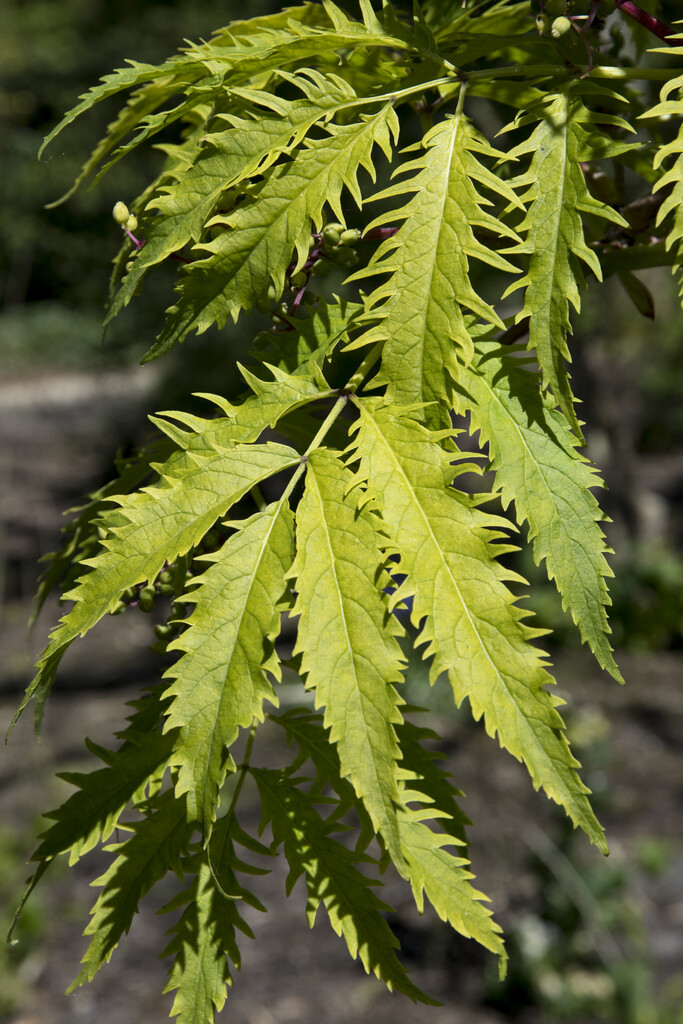Sambucus racemosa 'Plumosa Aurea'
European red elder 'Plumosa Aurea'
'Plumosa Aurea' is a bushy deciduous shrub with golden-yellow, pinnate leaves composed of five attractively dissected leaflets, bronze-tinted when young; conical sprays of small cream flowers sometimes followed by scarlet berries ripening in summer
Synonyms
Sambucus racemosa 'Serratifolia Aurea'Sambucus racemosa 'Folius Aureus Laciniata'
see moreSambucus folius aureus laciniata
Size
Ultimate height
2.5–4 metresTime to ultimate height
5–10 yearsUltimate spread
2.5–4 metresGrowing conditions
Moisture
Moist but well–drainedpH
Acid, Alkaline, NeutralColour & scent
| Stem | Flower | Foliage | Fruit | |
| Spring | Cream | Bronze Yellow | ||
|---|---|---|---|---|
| Summer | Yellow | Red | ||
| Autumn | Yellow | |||
| Winter |
Position
- Full sun
- Partial shade
Aspect
South–facing or West–facing or East–facing
Exposure
Exposed or Sheltered Hardiness
H7Botanical details
- Family
- Viburnaceae
- Native to GB / Ireland
- No
- Foliage
- Deciduous
- Habit
- Bushy
- Potentially harmful
- Harmful if eaten. Wear gloves and other protective equipment when handling Pets (dogs, cats): Harmful if eaten - for further information and contact numbers regarding pets, see the HTA guide to potentially harmful plants
- Genus
Sambucus can be herbaceous perennials, deciduous shrubs or small trees, with pinnate leaves and umbels or panicles of small creamy-white flowers followed by red, white or black berries
- Name status
Accepted
How to grow
Cultivation
Grow in moderately fertile, humus-rich, moist but well-drained soil and best in part shade, leaves may scorch in hot sun and colour is retained best in dappled shade
Propagation
Propagate by hardwood cuttings in winter or semi-ripe greenwood cuttings in early summer
Suggested planting locations and garden types
- City and courtyard gardens
- Coastal
- Cottage and informal garden
- Flower borders and beds
- Hedging and screens
Pruning
Pruning group 7; tolerant of hard pruning to restrict size
Pests
May be susceptible to aphids (blackfly) which may infest the young shoots and foliage
Diseases
May be susceptible to verticillium wilt and honey fungus
Love gardening
Sign up to receive regular gardening tips, inspiration, offers and more
View our Privacy Policy
Get involved
The Royal Horticultural Society is the UK’s leading gardening charity. We aim to enrich everyone’s life through plants, and make the UK a greener and more beautiful place.

